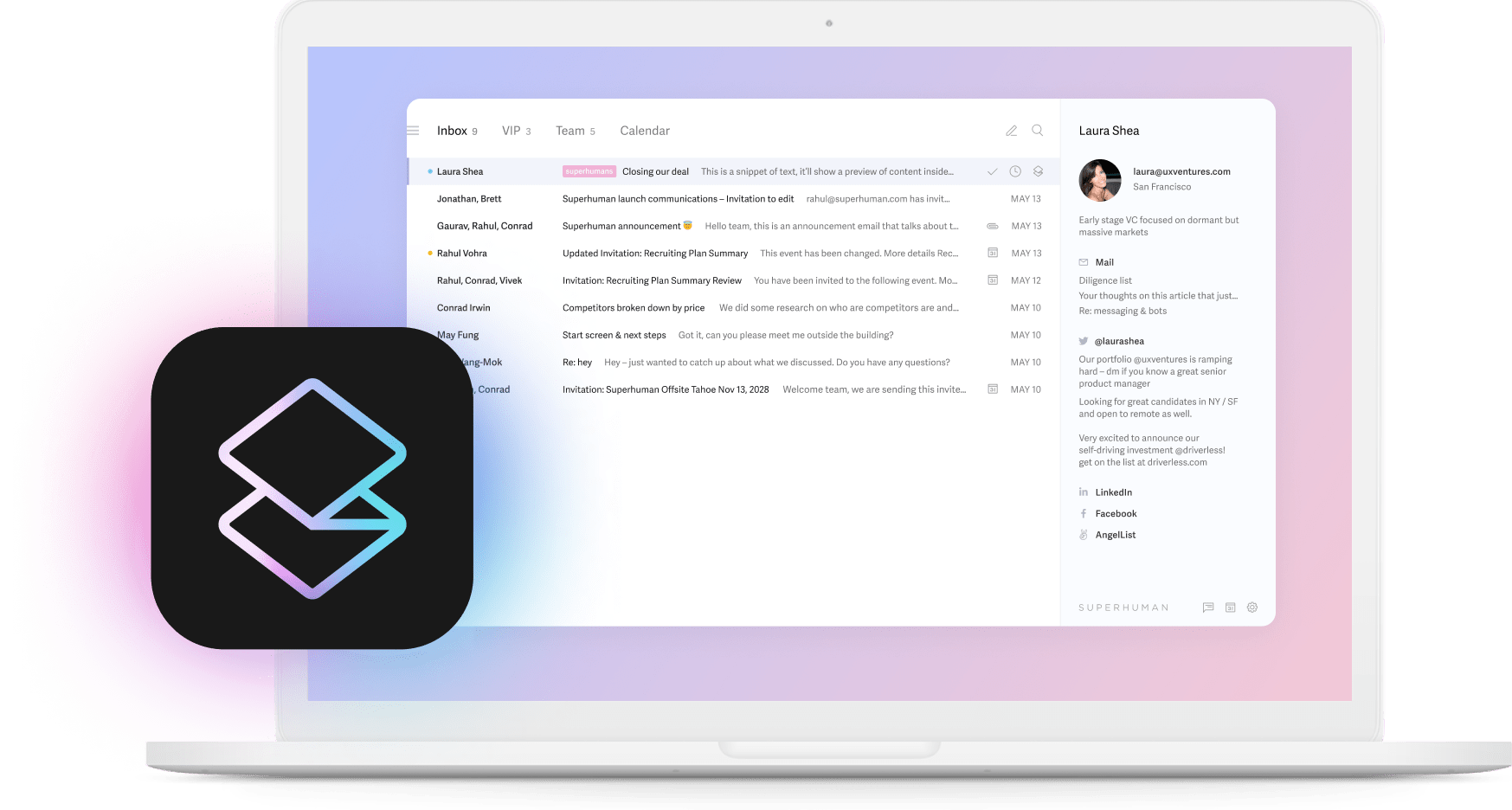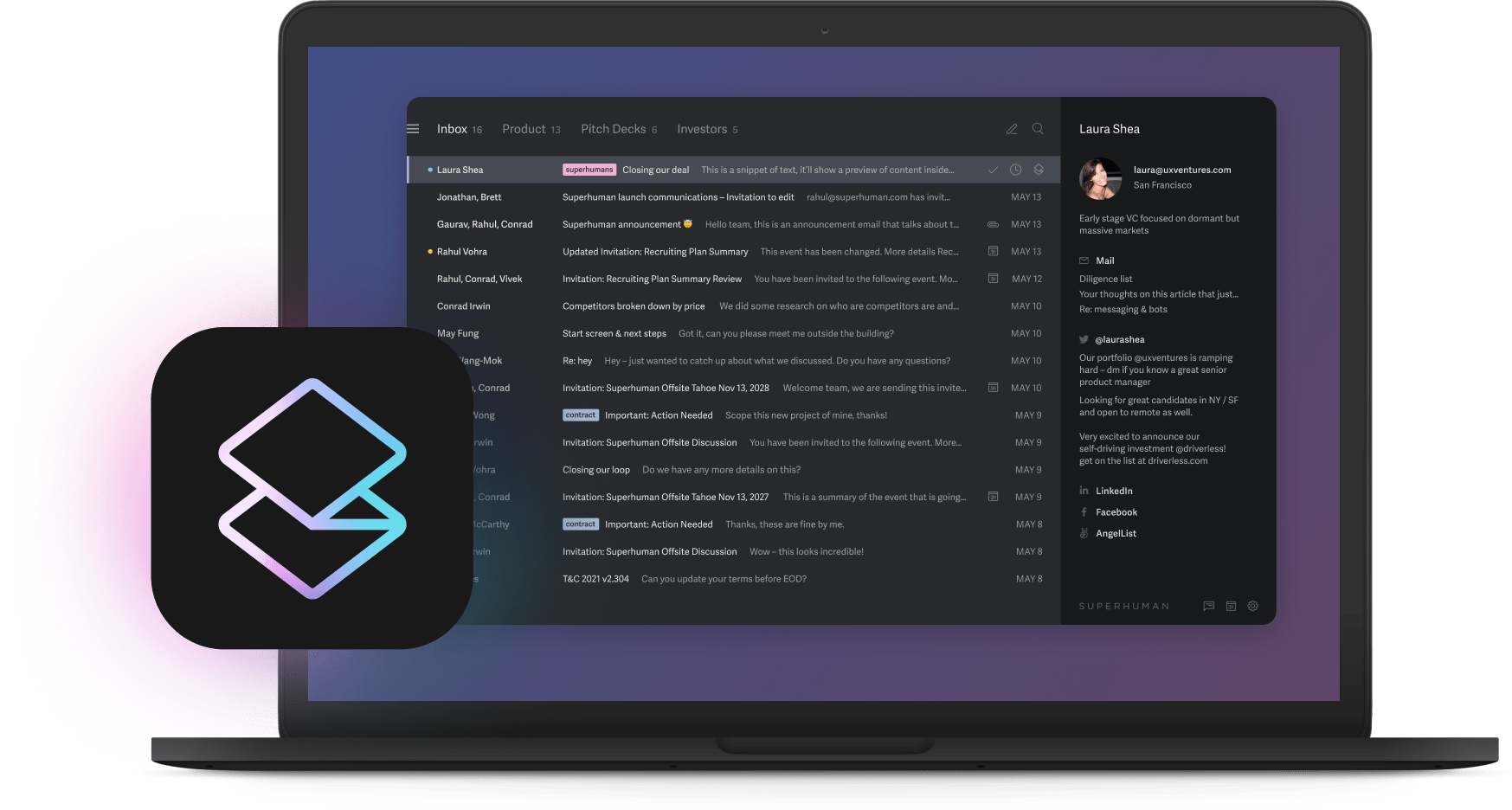
You know what's wild? We've watched teams go from using email and maybe Skype to juggling 15 different communication tools. And somehow, instead of making communication easier, everyone's more confused than ever.
Here's what actually happens: someone sends a message in Slack, another person responds in Teams, the project update goes to Asana, and the actual decision gets made in a hallway conversation that nobody documented anywhere. Sound familiar?
The real solution isn't finding the perfect app. We need to pick tools that match how your team actually works and stop the constant app switching that kills momentum.
We've looked at 14 communication apps across team chat, video calls, and secure messaging. The goal? Help you figure out which ones will actually make your team faster instead of just giving you more places to check for messages.
Quick comparison table
Think of this table as your cheat sheet. Each app does one thing really well, and that's usually what you should pick it for.
How to pick the right tools
Small teams (under 50 people): You don't need complexity. Connecteam handles everything in one place, Flock gets you up and running fast, or Superhuman if email is drowning your team. You can usually get these working in a day or two.
Growing companies (50-500 people): Now you need something that plays well with other tools. Slack connects to everything, or try Troop Messenger if security matters more than convenience. Plan about two weeks to get everyone trained and moved over.
Big companies (500+ people): You're dealing with different departments, locations, and workflows. Staffbase works great for reaching everyone including field workers, while Slack Enterprise handles complex setups. Expect a month to roll this out properly.
Special cases matter too:
- Need serious security? Signal and Troop Messenger use military grade encryption
- Talk to customers directly? WhatsApp Business and Truecaller help with customer calls
- Work internationally with slow internet? Opera Mini and imo are built for limited bandwidth
- Building community or creative work? Discord and Telegram focus on engagement
What each app actually does
1. Connecteam — Best all-in-one team communication app
Connecteam brings together everything field teams need in one app. You get chat, company updates, employee contacts, training materials, surveys, and connections to other tools. All in one place.
Companies like SodaStream use it for daily checklists, training new people, and keeping field teams updated in real time. Instead of switching between five different apps, everyone uses just one.
Business Impact: Teams stop using multiple apps and keep communication consistent across everyone. Field workers stay connected and productive even without internet. Companies report smoother operations because communications, updates, and workflows all happen in the same place.
Who it's for: Companies with 50-500 field workers who need everything managed from one place.
2. Slack — Best for large teams & enterprise integrations
Slack owns the enterprise space for good reason. You get organized channels, quick video calls, detailed logs of who did what, and thousands of connections to other business tools. It grows from small teams to huge companies without breaking.
IBM uses Slack to connect over 350,000 employees, send automatic notifications, and integrate workflows across the entire company. If it works for IBM, it can probably handle your team.
Business Impact: When IBM connects 350,000+ people through Slack without problems, you know it can handle serious scale. Teams get smoother workflows through thousands of tool connections and automatic notifications. The search function and organized channels save tons of time when you're trying to find information or coordinate projects.
Who it's for: Organizations with 100+ people who need extensive connections to other tools and detailed admin controls.
3. Superhuman — Best AI-native email tool
Superhuman turns email into a competitive advantage. The AI analyzes your past emails to match your tone and voice automatically. No more staring at blank emails wondering how to respond.
Teams using Superhuman save hours every week and never miss important emails. The platform learns how you write over time, so you can maintain your authentic voice while spending less mental energy on email.
Key features:
- Split Inbox: Automatically sorts emails to highlight important messages from colleagues, executives, and critical tools
- Superhuman AI: Learns how you write to keep your personal tone
- Instant Reply: Suggests responses that fit the context
- Auto Summarize: Turns long email threads into quick summaries
- Real-Time Read Statuses: Shows exactly when emails get opened and on what device
- Snippets: Quick templates you can share across your team
Business Impact: Teams using Superhuman respond 12 hours faster and handle twice as many emails in the same time. The AI learns how each person writes to keep their personal tone while reducing mental effort. Teams report major time savings through automatic email sorting and smart response suggestions.
Who it's for: Executives, sales teams, and knowledge workers who handle 50+ emails daily.
Try Superhuman4. Flock — Best for built-in video conferencing
Flock combines team messaging with video calls, file sharing, and project management. The big advantage? You can jump from text to video without switching apps.
Remote teams use Flock to manage projects, share files, and work together in real time. No app switching means conversations keep their momentum.
Business Impact: Remote teams reduce app switching by managing projects, sharing files, and collaborating in real time all in one place. This keeps communication flowing and improves team coordination. Teams benefit from smooth transitions between text and video calls within the same platform.
Who it's for: Remote teams of 20-100 people who prioritize video communication and want something they can set up quickly.
5. Troop Messenger — Best for quick audio messaging
Troop Messenger focuses on secure business chat with voice messages, file sharing, and detailed access controls. Think of it as the security-first option that still prioritizes ease of use.
Defense agencies trust Troop Messenger for secure, encrypted team communication and file sharing. When the military trusts your security, you know it's serious about protecting information.
Business Impact: Defense agencies trust Troop Messenger for secure, encrypted communication and file sharing, proving the platform has serious security infrastructure. Teams benefit from complete audit trails and role based access controls that ensure security compliance. The voice message feature speeds up communication while maintaining the security protocols essential for sensitive environments.
Who it's for: Security focused organizations, healthcare, government, and teams that need detailed audit trails and enhanced security.
6. Staffbase — Best employee intranet & internal communications
Staffbase works as an employee communication platform designed for large organizations, especially those with field workers or frontline employees. Think company wide announcements, social feeds, and collaboration tools all branded for your company.
Adidas connects global teams and drives engagement with Staffbase's branded employee app. This shows how big companies use the platform to keep communication consistent across different locations and job types.
Business Impact: Adidas successfully connects global teams and drives engagement through Staffbase's branded employee app, keeping communication consistent across different locations and job types. The platform helps large companies reach field workers effectively through mobile optimized channels. Teams benefit from increased employee engagement through social feeds and real time communication that connects corporate messaging with frontline workers.
Who it's for: Large companies (1,000+ employees) with significant field workforce who need branded internal communications.
7. Google Meet — Best stand-alone video meetings
Google Meet provides straightforward video calls with easy join links and deep Google Workspace integration. If your team already lives in Google apps, this is the obvious choice for video calls.
Schools and businesses use Google Meet for secure, large scale virtual meetings and classrooms. The platform handles high volume usage while maintaining good connection quality.
Business Impact: Teams already using Google Workspace see immediate productivity gains with zero learning curve and seamless calendar integration. Schools and businesses successfully use Google Meet for secure, large scale virtual meetings and classrooms, proving reliable performance under heavy usage. The straightforward approach eliminates technical barriers while maintaining good connection quality across different types of users.
Who it's for: Organizations heavily invested in Google's ecosystem who need reliable video calls without additional complexity.
8. Signal — Best for secure, private messaging
Signal leads the privacy focused messaging space with open source end to end encryption, no ads, and minimal data collection. If privacy matters more than features, this is your app.
Journalists and NGOs rely on Signal for confidential, secure communication when handling sensitive information or coordinating in high risk environments.
Business Impact: Journalists and NGOs rely on Signal for confidential, secure communication when handling sensitive information or coordinating in high risk environments. The platform provides legal grade communication security essential for industries handling sensitive data, reducing compliance risks. Teams benefit from complete privacy protection through end to end encryption without ads or data collection practices that could compromise confidentiality.
Who it's for: Journalism, legal, healthcare, and activist organizations who need maximum privacy protection and confidential communication.
9. Discord — Best for community-driven team hangouts
Discord creates community driven communication through voice channels, screen sharing, and persistent chat rooms. Think of it as the informal option that encourages spontaneous interaction and team bonding.
Remote teams use Discord's voice channels for always on collaboration and virtual coworking. This creates ambient connection that replicates being in the same office.
Business Impact: Remote teams use Discord's voice channels for always on collaboration and virtual coworking, creating ambient connection that replicates physical office interactions. The platform excels at building team culture through informal collaboration environments that encourage spontaneous interaction and bonding. Teams benefit from strong community features and excellent voice quality that appeals particularly to younger workforce demographics.
Who it's for: Creative teams, startups, and remote first organizations who prioritize informal culture and community building.
10. WhatsApp Business — Best for customer-facing SMBs
WhatsApp Business lets small to medium businesses communicate with customers through business profiles, quick replies, and automated messages. You're building on WhatsApp's massive global user base while adding professional features.
Small retailers use WhatsApp Business to manage customer questions and automate responses. They take advantage of the familiar interface and widespread adoption.
Business Impact: Small retailers use WhatsApp Business to manage customer questions and automate responses, taking advantage of the familiar interface and widespread adoption. Teams benefit from direct customer communication through business profiles and automated messaging built on WhatsApp's massive global user base. The platform enables immediate customer engagement without requiring customers to learn new communication tools.
Who it's for: Small businesses, local services, and customer facing operations who need direct customer communication.
11. Telegram — Best for large group chats & broadcasts
Telegram supports massive group conversations, broadcast channels, and bot automation. Perfect for organizations that need to communicate with large audiences or communities. You get optional end to end encryption alongside powerful distribution capabilities.
News organizations use Telegram to broadcast updates to millions of subscribers instantly. This shows the platform's capacity for high volume, one to many communication.
Business Impact: News organizations use Telegram to broadcast updates to millions of subscribers instantly, proving the platform's capacity for high volume, one to many communication. Teams benefit from massive group conversation capabilities and powerful bot automation that enables sophisticated communication workflows. The broadcast channels and distribution capabilities make it ideal for reaching large audiences with minimal technical overhead.
Who it's for: Media companies, large communities, and organizations who need mass communication capabilities and large scale audience engagement.
12. Truecaller — Best caller ID & spam blocking
Truecaller provides caller identification, spam blocking, and business verification services to improve phone communication quality. Think of it as making sure your important business calls actually reach people instead of getting filtered as spam.
Businesses use Truecaller to verify their identity and reduce call spam for customers. This ensures important business calls reach their intended recipients.
Business Impact: Businesses use Truecaller to verify their identity and reduce call spam for customers, ensuring important business calls reach their intended recipients. Teams benefit from improved phone communication quality through caller identification and spam blocking services. The platform helps maintain professional phone interactions while reducing disruption from unwanted calls, particularly valuable for sales and customer service teams.
Who it's for: Sales teams, customer service organizations, and businesses who make frequent outbound calls.
13. Opera Mini — Best lightweight browser for web communications
Opera Mini serves as a lightweight browser optimized for data constrained environments. You get data saving compression and built in ad blocking. The browser enables web based communication in regions with limited connectivity or expensive data plans.
Teams in low bandwidth regions rely on Opera Mini for fast, data efficient browsing and communication when traditional apps consume too much bandwidth or load too slowly.
Business Impact: Teams in low bandwidth regions rely on Opera Mini for fast, data efficient browsing and communication when traditional apps consume too much bandwidth or load too slowly. Organizations benefit from significant data savings and faster loading times in data constrained environments. The browser's compression technology enables effective web based communication in regions with limited connectivity or expensive data plans.
Who it's for: Organizations operating in bandwidth constrained regions or managing mobile data costs.
14. imo — Best for international calls on low bandwidth
imo specializes in international calling and messaging optimized for low bandwidth networks. Popular in emerging markets where internet connectivity might be limited or expensive. The platform prioritizes call quality and reliability over having lots of features.
Teams in emerging markets use imo for free international calls and messaging on 2G/3G networks, enabling global communication despite infrastructure limitations.
Business Impact: Teams in emerging markets use imo for free international calls and messaging on 2G/3G networks, enabling global communication despite infrastructure limitations. Organizations benefit from reliable low bandwidth optimization that maintains call quality even in challenging network conditions. The platform enables international business communication in regions where traditional communication tools might be unreliable or expensive.
The bottom line
Here's what we've learned after looking at all these tools: most teams aren't struggling with communication because they need more features. They're struggling because they're using too many different places to have conversations. Pick one tool for quick messages, one for video calls, and maybe one for talking to customers. Everything else is just procrastination disguised as productivity optimization.
The best communication tool is the one your team actually uses consistently. You can have the most secure, feature rich, perfectly integrated setup in the world, but if half your team forgets to check it or defaults back to email, you've solved nothing. Start simple, get everyone using the same tools, and add complexity only when you've outgrown what you have.





